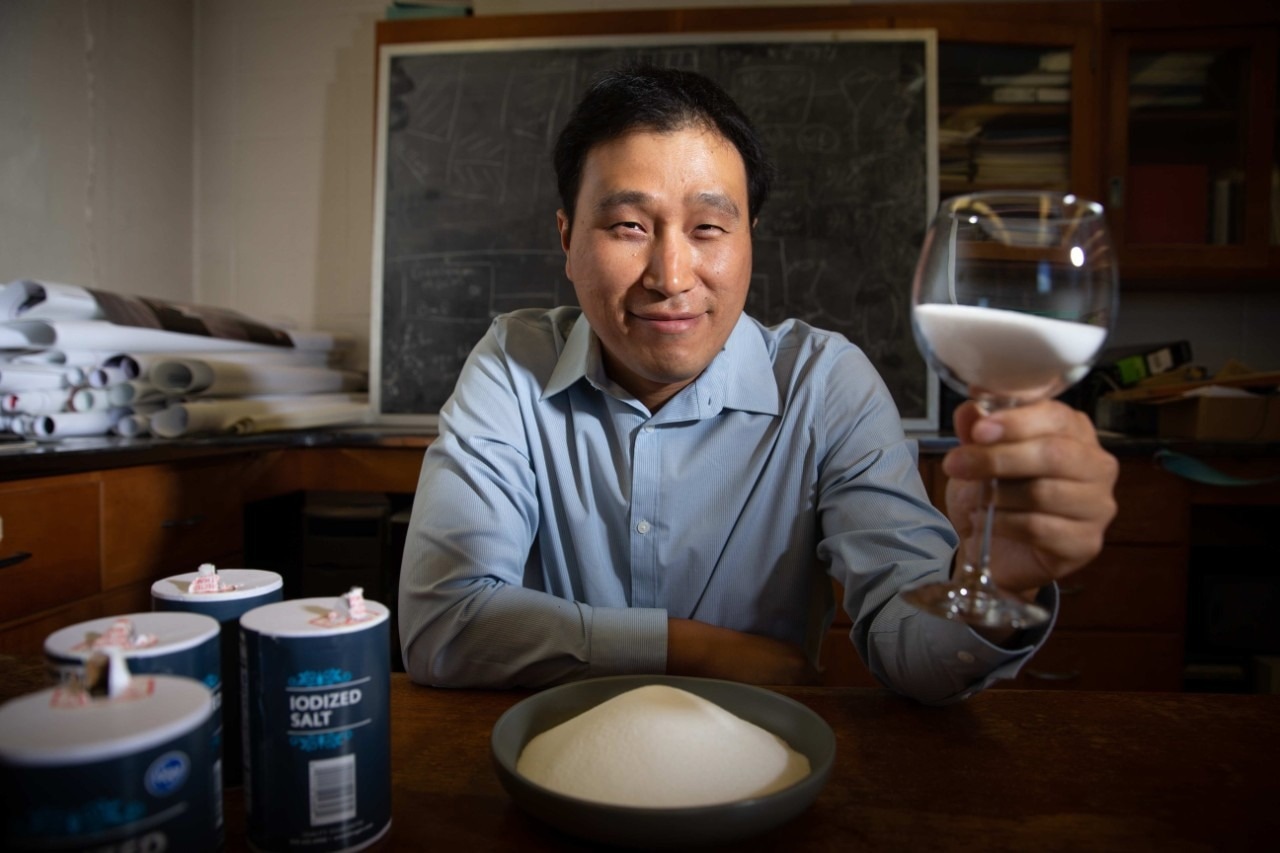The thermodynamic characteristics of molten salts, which are employed in numerous nuclear and solar energy applications, have been studied in a novel way by a chemist at the University of Cincinnati.
 Research associate Yu Shi studies computational chemistry in UC’s College of Arts and Sciences. Image Credit: Photo/Andrew Higley/UC Marketing + Brand.
Research associate Yu Shi studies computational chemistry in UC’s College of Arts and Sciences. Image Credit: Photo/Andrew Higley/UC Marketing + Brand.
Yu Shi, a computational chemist and research associate at the University of California’s College of Arts and Sciences, and his colleagues created a new simulation technique that uses deep learning AI to quantify free energy.
Molten salt is salt that has been heated to a high enough temperature to become liquid. Table salt, or sodium chloride, was the subject of research at UC. Shi claimed that the qualities of molten salt make it a useful medium for nuclear power plant cooling systems. They can be used to store energy or transfer heat in solar towers.
Ironically, molten salt conducts electricity even though salt is an insulator.
Molten salts are stable at high temperatures and can hold a lot of energy in a liquid state. They have good thermodynamic properties. That makes them a good energy storage material for concentrated solar power plants. And they can be used as a coolant in nuclear reactors.
Yu Shi, Computational Chemist and Research Associate, College of Arts and Sciences, University of California
The study, which was published in the Royal Society of Chemistry journal Chemical Science, may aid investigations into how these salts affect the corrosion of metal containers, such as those used in the upcoming generation of nuclear reactors.
Engineers can now better understand the impact of various impurities and solutes (the substance dissolved in a solution) on corrosion thanks to the research’s reliable method for examining the conversion of dissolved gas to vapor in molten salts. According to Shi, it will also aid in the study of the atmospheric release of potentially toxic gas, which will be very helpful for fourth-generation molten salt nuclear reactors.
We used our quasi-chemical theory and our deep neural network, which we trained using data generated by quantum simulations, to model the solvation thermodynamics of molten salt with chemical accuracy.
Yu Shi, Computational Chemist and Research Associate, College of Arts and Sciences, University of California
Thomas Beck, the co-author of the study and the former head of the chemistry department at the University of California, is now the section head of science engagement at the Oak Ridge National Laboratory in Tennessee. According to Beck, unlike water, which can produce extremely high pressure at high temperatures, molten salts do not expand when heated.
Beck adds, “The pressure inside a nuclear reactor goes up a lot. That’s the difficulty of reactor design—it leads to more risks and higher costs.”
To run the simulations, scientists made use of the Ohio Supercomputer Center and the Advanced Research Computing Center at UC.
Beck states, “At Oak Ridge, we have the world’s fastest supercomputer, so our experiment would take less time here. But on typical supercomputers, it can take weeks or months to run these quantum simulations.”
Stephen Lam from the University of Massachusetts Lowell was also a member of the research group.
It’s important to have accurate models of these salts. We were the first group to calculate free energy of sodium chloride at high temperature in liquid and compare it to previous experiments. So we proved it’s a useful technique.
Thomas Beck, Study Co-Author and Section Head, Science Engagement, Oak Ridge
In a study that was published in the PNAS journal in 2020, Shi and Beck developed a free-energy scale for single-ion hydration using quantum mechanical simulations of the sodium ion in water and quasi-chemical theory. According to Shi, it was the first-time quantum mechanics had been used to calculate the solvation free energy for the charged solute.
According to Beck, molten salts will be crucial for creating new energy sources, possibly even fusion energy, in the future.
Beck adds, “They’re proposing using molten salts as a coating coolant for the high-temperature reactor. But fusion is farther down the road.”
The research was supported by grants from the National Science Foundation, the University of California College of Arts and Sciences, the Office of Nuclear Energy of the US Department of Energy, and computational assistance from the Oak Ridge Leadership Computing Facility.
Journal Reference:
Shi, Y., et al. (2022) Deep neural network based quantum simulations and quasichemical theory for accurate modeling of molten salt thermodynamics. Chemical Science. doi.org/10.1039/D2SC02227C.